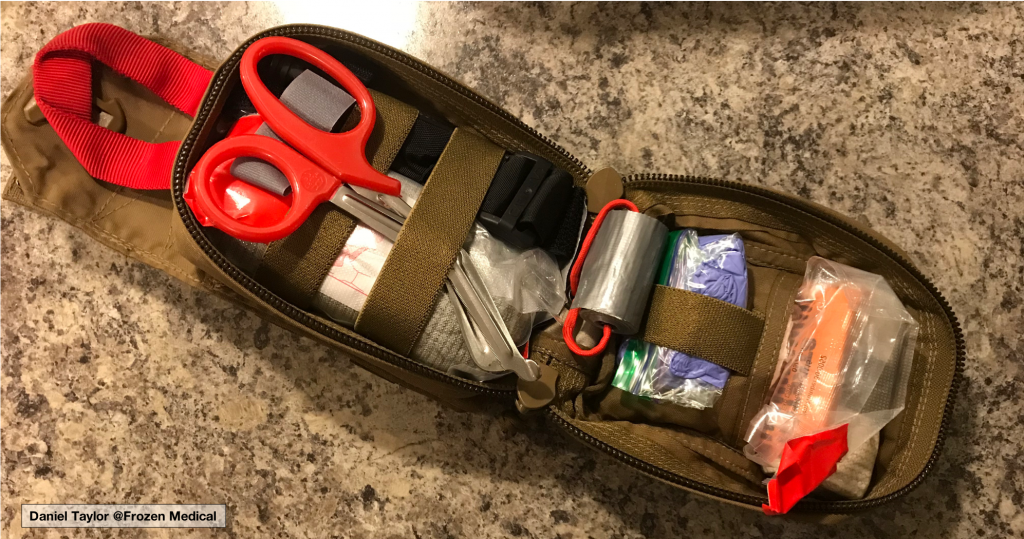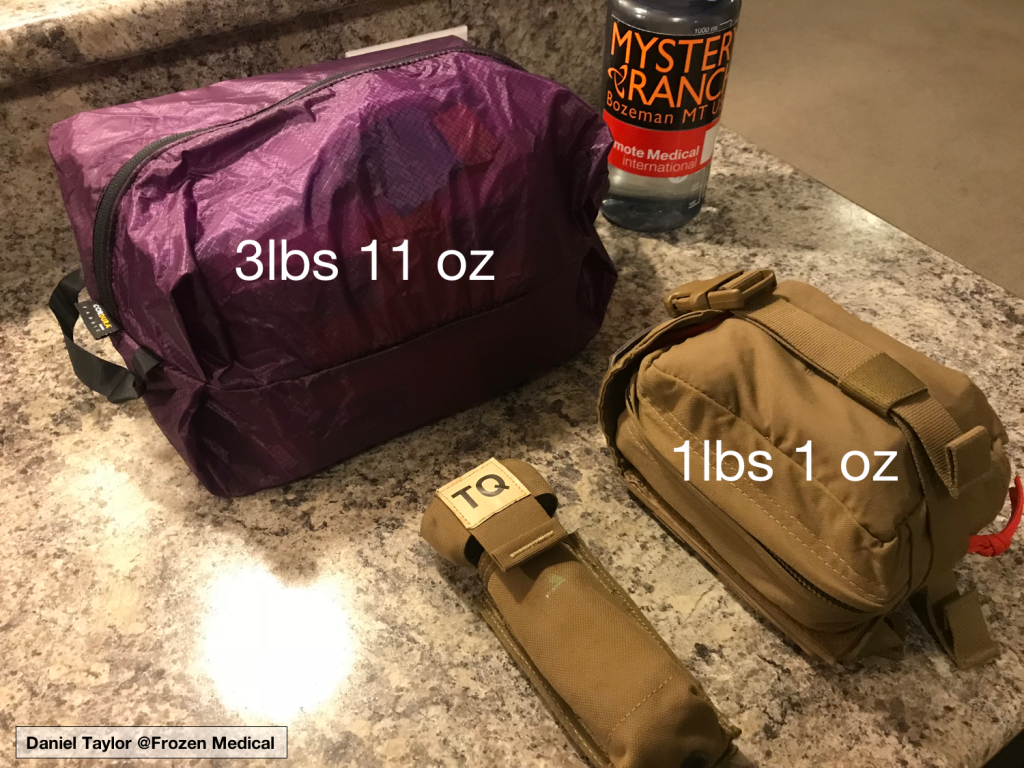A friend of mine is a photojournalist that has had his conflict zone work featured in The New York Times, Al Jazeera, and The Guardian to name only a few outlets. It is essential for his work that he go to some of the most dangerous places on the earth to help show what is happening there. He has spent months embedded with NGOs on the Mediterranean rescuing refugees and in Iraq near the front lines against ISIS where I met him.
One of our first interactions in Mosul was me asking him where his tourniquet was. He said that he didn’t have one. He had armor, camera equipment, doc Martens, and twice the heart of most people but didn’t have trauma supplies. I gave him the tourniquet in a pouch from my belt and told him to keep it on his person as long as he was in Mosul. A few days later I gave him a refresher course on how to use a CAT G7.
A few months later we reconnected and I offered to put together a med kit for him. We talked about his risk profile, training, carrying capacity, methods of travel, and access to healthcare when on location.
Based on that information I put together the setup shown and described below. By a happy turn of fate we ended up being in Washington DC together at the same time allowing me to hand deliver it and enjoy our first meal together outside of a war zone.
The concept of the kit was this, if he was wearing his body armor somewhere the threat was assumed to be high thus requiring additional trauma supplies but if he wasn’t going to be wearing armor or traveling with armor his overall kit shouldn’t suffer. I gave him a trauma kit to be mounted on his armor and a general purpose kit to go in his day pack.

2 – CAT Tourniquet
1 – SWAT Tourniquet
1 – Israeli Dressing
1 – Compressed Gauze
1 – Roll of Duct Tape (small)
2 – Hyfin Chest Seal
2 – Pairs of Nitrile Gloves
1 – Pair EMT Shears
Pouch – ATS Tactical Medical Pouch, Small
1 – Moxifloxacin 400mg
1 – Mobic 15mg
1 – APAP 650mg
1 – CAT Tourniquet
1 – SWAT Tourniquet
2 – ACE Bandage (velcro kind)
2 – Combat Gauze
2 – Compressed Gauze
2 – 5×9 Gauze
5 – 4×4 Gauze
1 – Roll of Duct Tape (small)
1 – Roll of Medical Tape
2 – Triangle Bandages
1 – Pair of Chest Seals
5 – Pairs of Nitrile Gloves
1 – CPR mask
2 – Abdominal pad dressings
1 – SAM Splint
5 – Bandages, various size, fabric
1 – Irrigation syringe w/pressure tip
1 – Small bottle of povidone iodine
2 – 18G needles
10 – BZK wipes
3 – tampons and tampax-type pads – unscented
1 – Carmex or vaseline for lips
2 – Dermabond/Superglue
5 – tegaderms, steri strips, tincture of benzoin ampoules
2 – 4” ace wraps, fabric
10 – Gloves
5 – Hydrocortisone cream
1 – Dental floss
1 – Cavit – fillings and lost crowns
1 – Afrin
1 – Eyedrops
1 – EMT Shears
1 – Sharpie
1 – Headlamp
1 – Tweezer (Tweezerman Brand)
1- Toenail clippers (scissor style)
Wilderness First Aid Field Guide
Pouch – Granite Gear Air ZippSack 12L
I’m pretty sure it was the 12 liter, but I’m not 100%.
A consideration with the construction of this kit was how it could be perceived by customs authorities or other government officials should his gear be searched. The vest mounted kit would only be carried along with his armor so appearance of that item is less significant.
The general kit though would likely be carried in a civilian pack and so I took efforts to make the kit look non-military and non-threatening. The pouch is definitely a civilian color, the labels clearly spell out what is contained, and the components are all as civilian as possible including an orange SWAT TQ. To avoid questions about the medications they are clearly labeled as non-prescription and and what their purpose is in case the local names are different than the products included.


